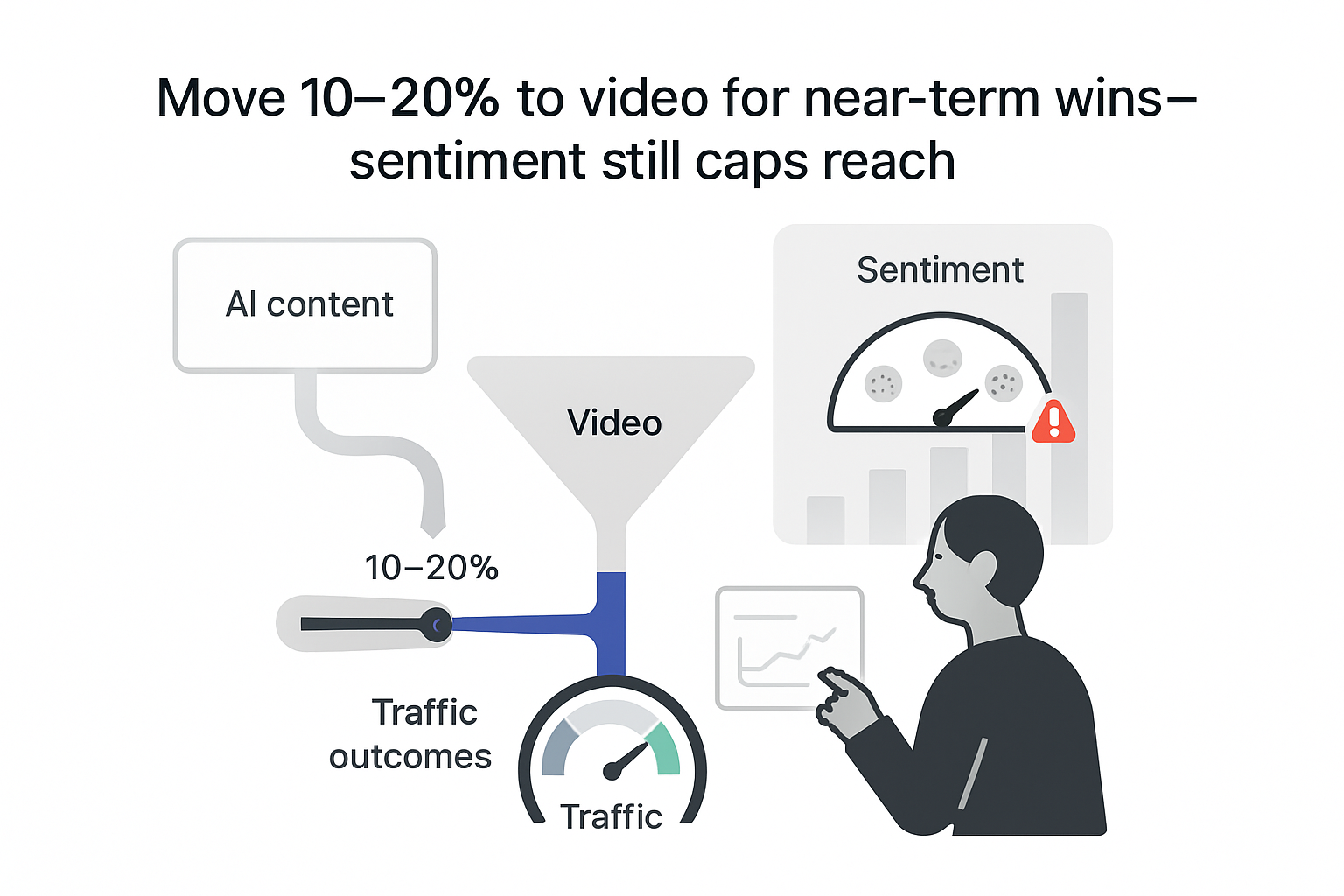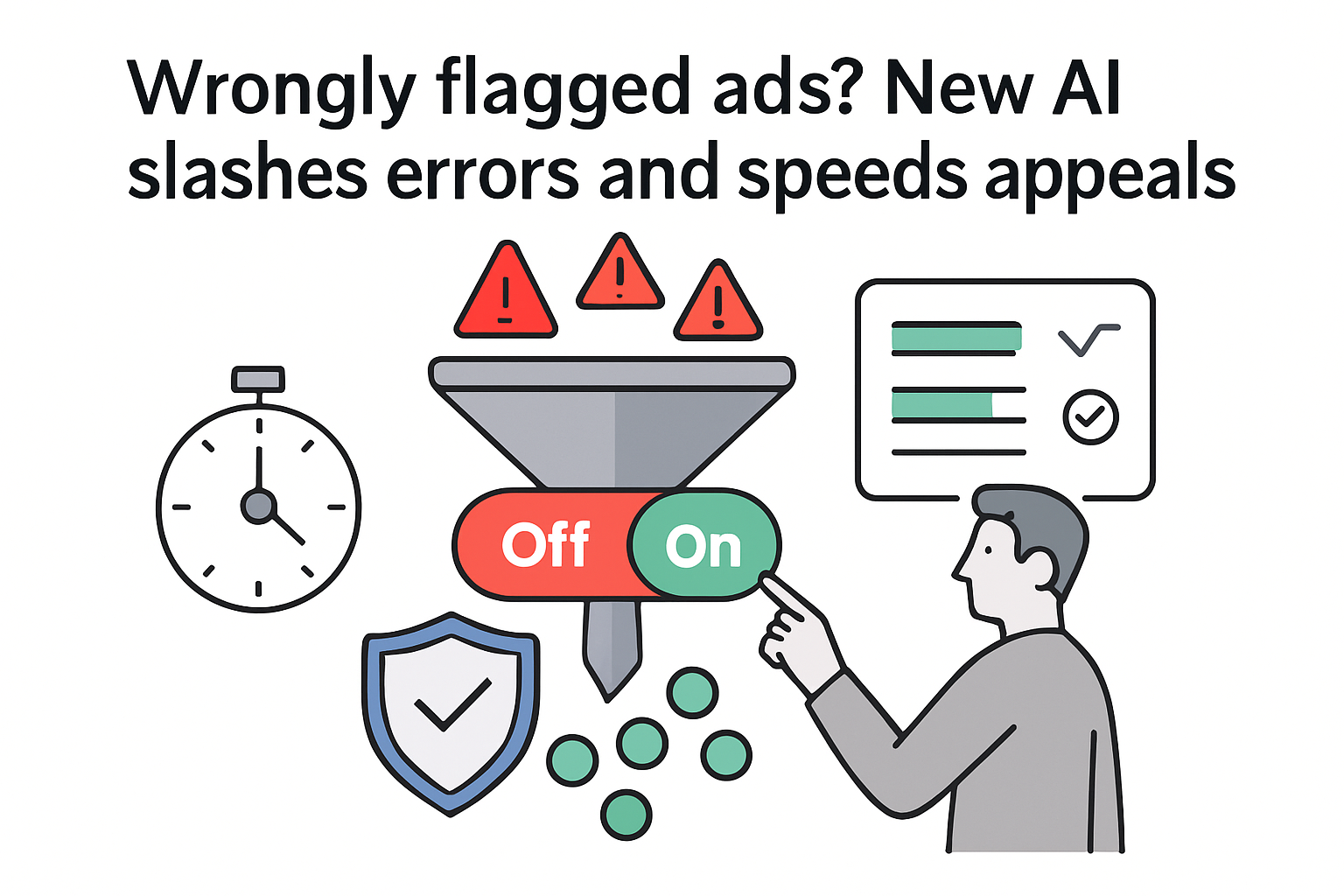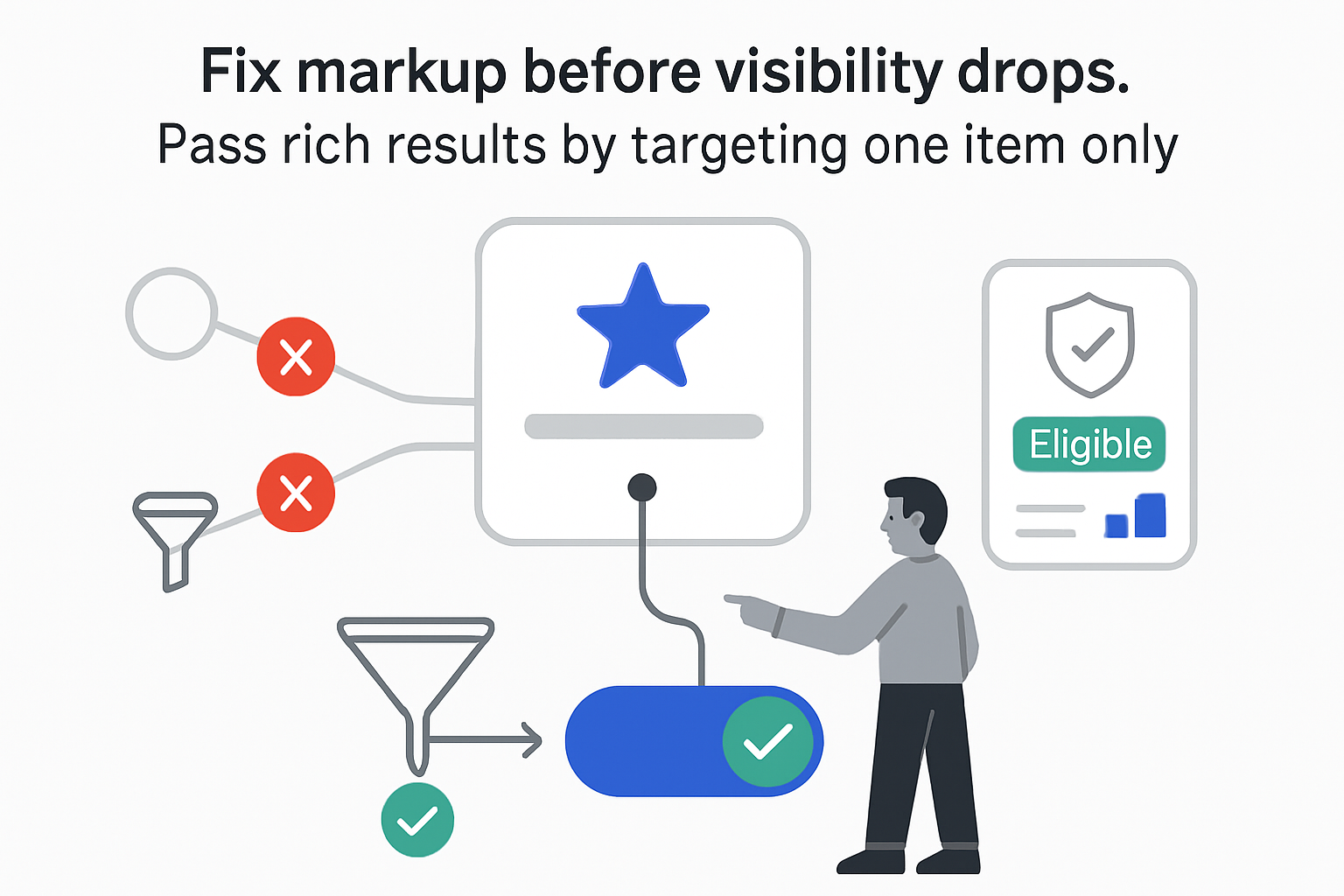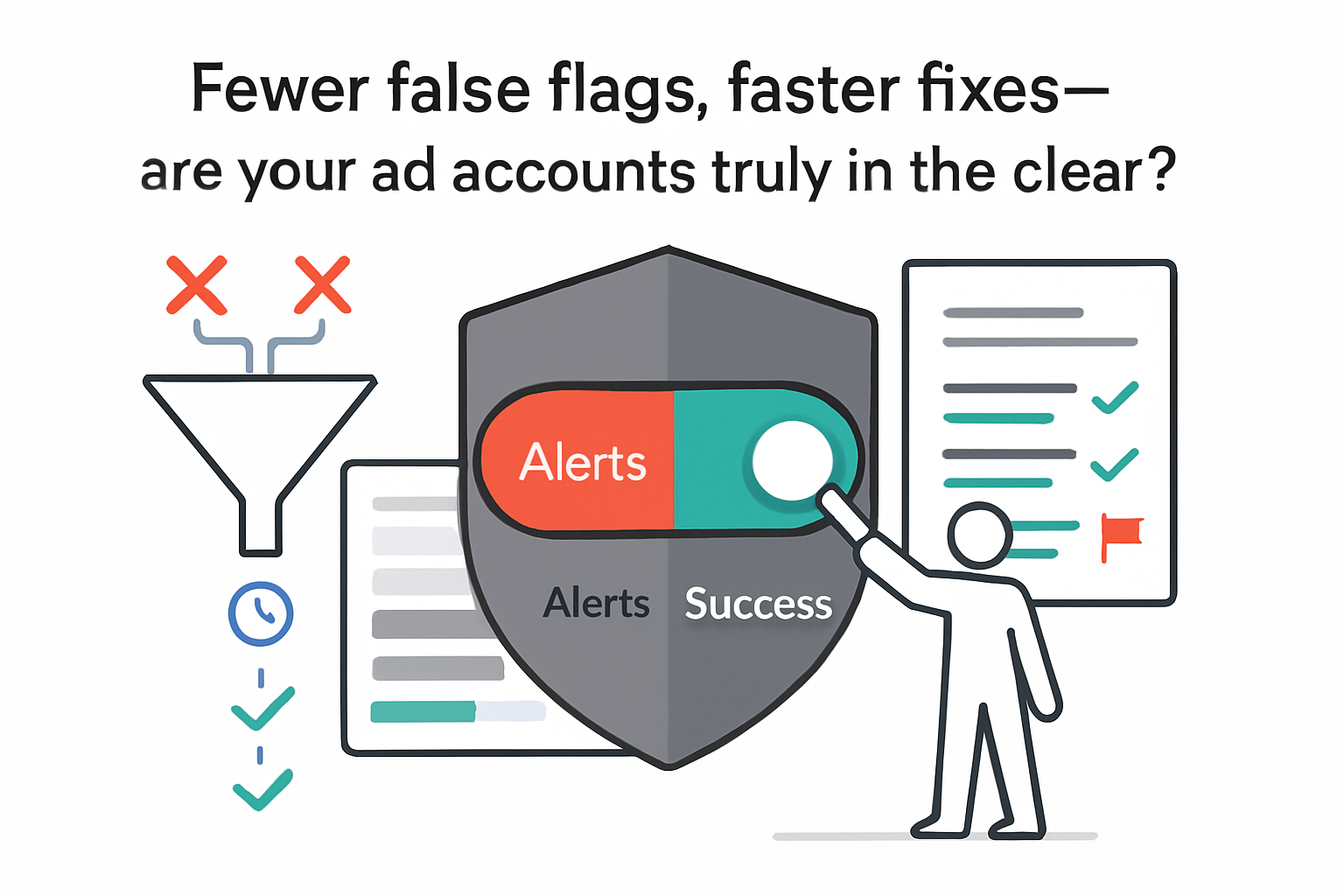AI search SEO has become a time sink for many teams while larger, nearer-term gains sit in video search. The core question is whether marketers should shift a measurable share of effort from optimizing for AI assistants toward YouTube and other video platforms, and how product and brand sentiment constrain any SEO outcome.
AI search SEO resource allocation: what matters now
Thesis: Over the next 6-12 months, most brands will generate more incremental reach and measurable conversions by moving 10-20% of SEO and R&D effort from AI assistant optimization to YouTube and short-form video, while solving product quality and customer sentiment issues at the source. This view rests on three realities: (1) assistants currently drive a very small share of site traffic, (2) YouTube is a dominant search and discovery channel with near-term demand, and (3) AI-generated answers and rankings are constrained by brand sentiment and product-market performance that content alone cannot fix [S1][S2].
Mechanics in brief:
- Demand now: YouTube has mass usage and search intent across how-to, reviews, and product research. Assistants have high awareness but low referral volume today [S1][S2].
- Distribution: YouTube routes discovery via Search → Suggested → Browse. Assistants respond in-line with sparse links, limiting click-outs.
- Constraint: If product or service issues trigger negative reviews or social chatter, AI models and search systems dampen brand visibility regardless of on-page tweaks.
Implication: Rebalance effort toward video search while laying durable groundwork for AI search - clean information architecture, authoritative citations, and accurate structured data. Treat sentiment and product quality as inputs to search performance, not outputs of SEO.
Key takeaways
- Shift 10-20% of search and experimental effort to YouTube and short-form video: assistants are <1% of traffic for many sites today per Ahrefs, while YouTube usage is widespread and supports how-to, review, and comparison intent [S1][S2].
- Focus AI search work on durable prerequisites, not speculative tactics: schema accuracy, source-level authority, and brand mentions across trusted sites matter more than "prompt bait" in answers.
- Treat product and customer experience as ranking inputs: if social and review sentiment skews negative, AI and classic search models will reflect it. Content cannot offset persistent product friction [S1].
- Build measurement that connects video to business: tie view cohorts to branded search lift, site visits, and assisted conversions. Set guardrails for CPA vs an allowed learning budget.
- Hedge distribution risk: balance YouTube SEO with paid YouTube formats to stabilize reach while the channel matures.
Situation snapshot
What triggered this analysis
- An Ahrefs podcast highlighted two pitfalls: over-focusing on AI assistants vs higher-yield channels like YouTube, and expecting SEO to solve brand and product issues that drive negative sentiment and limit visibility in AI search [S1].
Undisputed facts
- YouTube is one of the most used online platforms in the U.S., reaching a majority of adults and a very high share of younger users [S2].
- Ahrefs reports that AI assistants currently drive under 1% of traffic for many sites. They also note YouTube is a strong driver of signups for them, evidencing business impact even when clicks to site are indirect [S1].
Breakdown and mechanics
Why YouTube outperforms assistants near term
- Demand concentration: YouTube has large, steady daily search activity and a strong recommendation loop. Search → initial views → Suggested surfacing → compounding impressions. Consistent publishing compounds into reach.
- Monetizable intents: Tutorials, reviews, and comparisons map cleanly to product discovery and retargeting. Viewers often search brand terms after exposure, lifting paid and organic brand performance.
- Click friction: Assistants prioritize in-answer responses. Citations exist but compete with answer completeness, so click-throughs are limited by design.
How assistants shape visibility
- Retrieval + synthesis: Models retrieve topically relevant sources, weigh authority and consistency, then summarize. A → B → C: high-quality product and reviews → favorable sentiment and mentions → assistant inclusion and positive framing.
- Structural signals: Clear entities and consistent facts - pricing, specs, locations - plus structured data reduce hallucination risk and improve summarization accuracy.
- Off-site authority: Third-party citations carry disproportionate weight vs first-party claims, especially in Your Money or Your Life (YMYL) and review categories.
Why product and sentiment cap SEO upside
If customers and reviewers trend negative, social and forum content scales faster than an in-house content team can counter. A → B → C: product friction → negative UGC and reviews → model summaries bias against the brand → lower inclusion in assistants and reduced classic SEO CTR. Ahrefs' pricing change case illustrates that content could not overcome persistent user pushback. The fix was policy-level, not SEO [S1].
Quant model for planning
Assume a site with 200,000 monthly sessions. If assistants are 0.5% of traffic and you double that through optimization, you gain about 1,000 sessions per month. A modest video program achieving 250,000 monthly impressions with a 0.5-1.0% site-visit rate - a mix of links, branded search lift, and retargeting recapture - yields 1,250-2,500 incremental visits per month, plus brand search growth. This frames why near-term portfolio weight favors video.
Impact assessment
Paid search and paid social
- Effect: Expect incremental branded search from video exposure, improved match rates, and larger retargeting pools. Modest lift to Quality Score via better ad engagement on branded terms.
- Winners: Brands that can fund top-of-funnel video while maintaining efficient remarketing.
- Actions:
- Track brand query volume and CPA deltas in markets where video runs vs controls.
- Use YouTube Ads to stabilize reach - in-feed, in-stream, Shorts.
- Align remarketing windows to video cadence. Test creative cutdowns for Performance Max video placements.
Organic search and AI assistants
- Effect: Limited near-term traffic from assistants. Gains are mostly in brand trust and consistency rather than raw clicks.
- Winners: Sites with strong entity clarity, consistent facts, and third-party authority.
- Actions:
- Audit entity data: organization, product, people, locations, prices, specs. Keep schema and on-page facts in sync with third-party listings.
- Monitor citations: track if Perplexity, ChatGPT, or Bing cite your domain for target topics. Log changes tied to content or PR pushes.
- Reduce contradiction: keep knowledge panels, Wikipedia and Wikidata, Google Business Profile, and major directories aligned.
YouTube and short-form video
- Effect: Higher reach and assist to conversions. Direct clicks vary by format, but brand search lift is common.
- Winners: Brands with teachable topics, visual demos, reviews, or problem-solution stories.
- Actions:
- Publish 1-2 long-form videos per week plus Shorts derived from each.
- Structure for search: clear titles targeting how-to and review terms, chapter markers, and description links to key pages.
- Measure: tie viewers to site sessions via UTM parameters. Read assisted conversions and incremental branded search against holdouts.
Creative and messaging
- Effect: Proof-driven narratives outperform promotional claims in assistants and video.
- Actions:
- Prioritize demos, side-by-side comparisons, customer walkthroughs, and FAQ clips.
- Build an evidence library - benchmarks, third-party quotes, case snippets - reused across site, PR, and assistant answers.
Operations and product
- Effect: Product issues create a ceiling on SEO and AI visibility.
- Actions:
- Stand up a cross-functional sentiment triage loop: ingest support tickets, reviews, and Reddit or YouTube comments weekly. Log issues and fixes.
- When controversy hits, solve root causes first. Use content to clarify changes only after resolution.
Scenarios and probabilities
- Base - likely: assistants remain <2% of sessions for most sites. YouTube maintains high reach. Balancing 80-90% classic SEO plus 10-20% video and assistant prep yields the best ROAS over 6-12 months.
- Upside - possible: assistants expand links and citations and begin driving 2-5% of sessions in some verticals. Early groundwork on entities and citations compounds.
- Downside - edge: AI answer coverage expands in commercial queries, depressing classic organic CTR by 5-15% in pockets. Brands without a video presence lose discovery and brand lift needed to offset CTR loss.
Risks, unknowns, limitations
- Traffic share varies: some niches may see more assistant-driven clicks than Ahrefs' observation. Verify with your analytics [S1].
- YouTube performance is uneven: categories with high CPMs or low visual appeal may see weaker unit economics.
- Measurement gaps: view-through and brand lift models require clean holdouts. Weak design can over- or under-assign credit.
- Potential falsifiers:
- Sustained assistant referral ≥5% of sessions in your analytics with stable conversion.
- A YouTube program fails to produce reach after consistent publishing and paid seeding for 90-120 days with strong creative benchmarks.
Sources
- [S1]: Search Engine Journal (Ahrefs podcast summary), 2025, article - "Is AI Search SEO Leaving Bigger Opportunities Behind?"
- [S2]: Pew Research Center, 2024, research report - "Social Media Use in 2024" - YouTube is the most widely used online platform among U.S. adults.
Validation: This analysis states a clear thesis, maps cause to effect, quantifies with a simple model and cited data, compares positions, and separates assumptions. It includes impacts, scenarios, risks, and actions.








.svg)